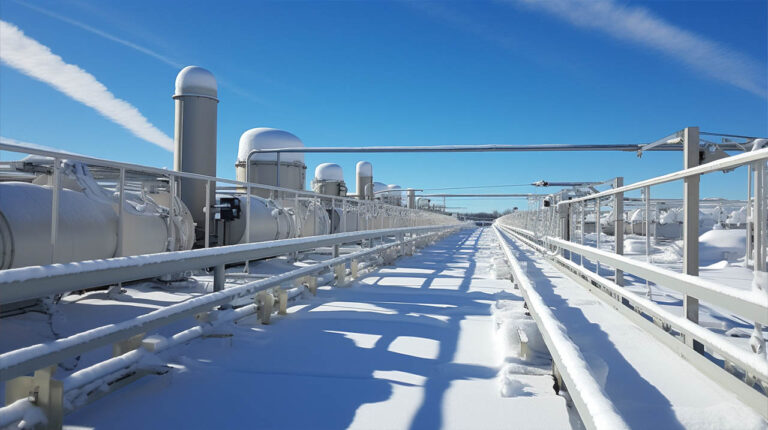In the ever-evolving world of roofing, ensuring that your roof coating can endure freezing temperatures is paramount. As the mercury dips, the last thing any homeowner or business wants is a roof coating that falters under the cold. Let’s delve into the significance of low-temperature flexibility in roof coatings and explore the best options available.
The Imperative of Low-Temperature Flexibility
Roofs, by design, bear a lot of weight and pressure. But when winter’s chill sets in, the coating on these roofs can become susceptible to brittleness and cracking. The key to preventing this is to opt for coatings with low-temperature flexibility, especially if your location is prone to heavy snow and ice. Such coatings can handle the added weight and pressure from these elements, ensuring the longevity of your roof.
Identifying Roof Coatings with Superior Cold Resistance
Several indicators can help you determine if a roof coating is adept at handling cold temperatures:
- Elastomeric Base: Coatings with an elastomeric base can stretch and flex without breaking, making them ideal for cold conditions.
- High Solids Content: A roof coating with a high solids content is generally thicker and more robust, ensuring better protection against the cold.
- UV-Resistant Topcoat: While primarily designed to offer protection against the sun, a UV-resistant topcoat can also shield your roof from cold weather adversities.
Spotlight on Acrylic and Silicone Roof Coatings
Two types of roof coatings stand out when it comes to low-temperature flexibility: Acrylic and Silicone.
Acrylic Roof Coatings
Acrylic coatings, renowned for their durability and resistance to extreme weather, are among the top choices in the market. Crafted from water-based acrylics, these coatings are adept at handling extreme cold, ensuring they don’t crack or deteriorate. Their application is straightforward, negating the need for heating. However, if you’re unsure about roof inspections or repairs, it’s always wise to consult with professionals like TecHero Roofing.
Silicone Roof Coatings
Silicone coatings, on the other hand, are celebrated for their UV resistance and overall durability. One of their standout features is that they don’t necessitate a primer, simplifying the application process. Known as “cool roofs”, they reflect the sun’s heat, ensuring your interiors remain comfortable. Even in winter, their low-temperature flexibility remains uncompromised, making them a reliable choice.
Advantages of Opting for Cold-Resistant Roof Coatings
Choosing a roof coating with low-temperature flexibility brings a plethora of benefits:
- Enhanced Roof Longevity: Such coatings can significantly reduce the chances of your roof becoming brittle or developing cracks.
- Optimized Energy Efficiency: By acting as an insulating layer, these coatings ensure your interiors remain warm during winters and cool during summers, enhancing overall energy efficiency.
- Protection Against Foot Traffic: Roof coatings offer a protective layer that minimizes wear and tear from foot traffic.
- Waterproofing: With the melting of snow and ice, leaks can become a concern. Cold-resistant roof coatings act as a seamless barrier against potential leaks.
At TecHero Roofing, we understand the importance of a robust roofing solution, especially in places like Santa Barbara where the weather can be unpredictable. Whether you’re looking for roof repair in Santa Barbara or seeking the expertise of Santa Barbara roofers, we’re here to assist.
Conclusion
In the face of extreme weather conditions, the right roof coating can make all the difference. By opting for coatings with low-temperature flexibility, you not only ensure the longevity of your roof but also enjoy a host of other benefits. For those in Santa Barbara and surrounding areas, TecHero Roofing stands ready to guide you in making the best choice for your roofing needs.


